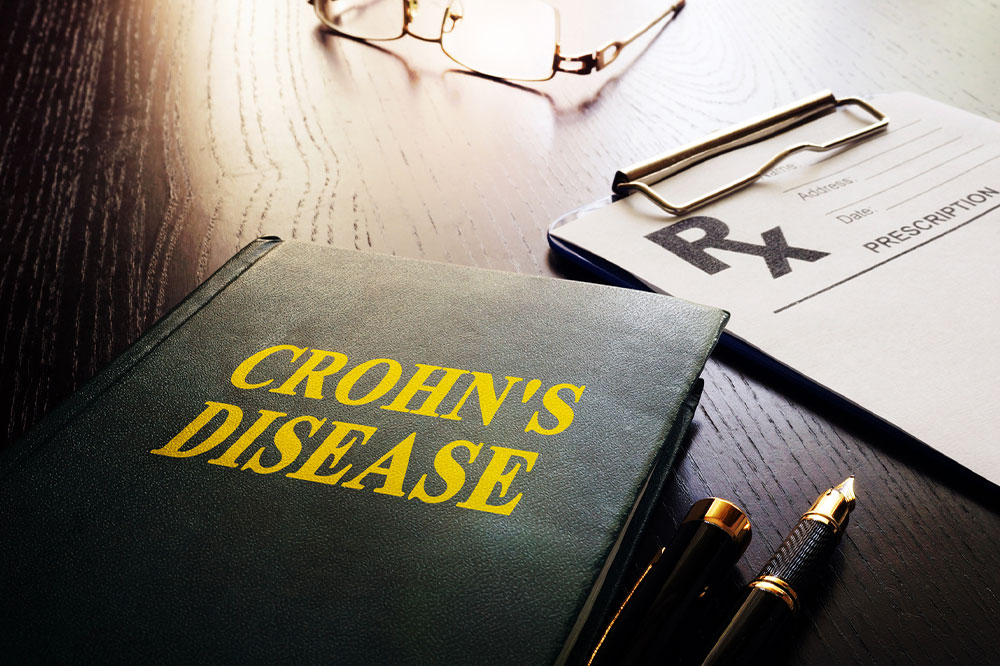
Warning signs of Crohn’s disease
Crohn’s disease is a type of IBD, or inflammatory bowel disease, that causes digestive tract inflammation. The inflammation may involve various areas of the digestive tract in people and progresses to deeper bowel layers. It can be debilitating and painful and might result in life-threatening complications. Even though there is no cure for Crohn’s disease, the knowledge of earning warning signs can help with better management. Here are the most prevalent Crohn’s signs:
Rectal bleeding
Since you have inflamed bowels, it might result in ulcer development. These ulcers may be large enough to bleed when you have a bowel movement. Hemorrhoids are also associated with IBD and are a top source of rectal bleeding. Anytime you experience blood in the stool, you must get it evaluated at the earliest and not ignore it.
Anal fissure
A tear in the anal canal or the anus lining is known as the anal fissure. It is usually painful and may also bleed. Unfortunately, it may develop at any age, but the risk of developing anal fissures lowers as you grow older. Moreover, people who have experienced anal fissures in the past are more susceptible to experiencing them again.
Diarrhea
It is another one of the top signs associated with Crohn’s disease. In IBD, the diarrhea is persistent and often bloody. People with Crohn-induced diarrhea have an irritated and swollen digestive tract. Consequently, the food’s transit time is fast, making it challenging for the colon to reabsorb water. In extreme cases, the patient may experience about ten diarrhea episodes a day.
Stomach pain
People with Crohn’s disease often experience stomach cramps. Typically, the pain is in the lower right abdomen, but it may occur anywhere along the digestive tract, depending on where the inflammatory process occurs. Abdominal pain is prevalent in people with Crohn’s disease and interferes with the quality of life. With progression, it might result in scarring of the intestinal tract lining, causing painful obstructions. Usually, inflammation with abscesses and ulcers in the intestines triggers the pain. Pain might also indicate that the disease is progressing, and you need to consult a doctor for a different treatment.
Eye problems
Crohn’s disease might also result in eye complications like:
- Scleritis induces headaches, red eyes, and light sensitivity. It may also cause eye pain that aggravates movement.
- Episcleritis is an inflammation on the insides of the eyelids that causes redness, itching, burning, and pain.
- Uveitis is an eye inflammation resulting in sensitivity to light, blurry vision, and redness.
Mouth sores
Chron’s disease leads to chronic inflammation in the mouth area, causing the eruption of sores. The disease damages the digestive system, failing to absorb minerals and vitamins. It results in deficiencies and, together with inflammation, causes mouth sores.
Cholangitis
Cholangitis affects the liver passages to the small intestine and the bile ducts and results in liver failure or damage.
Kidney stones
People with Crohn’s disease might also develop kidney stones when the urine has a high degree of uric acid, salt, or calcium that crystalizes and gets absorbed into the kidney.
Gallstones
These develop in the bile duct or the gallbladder when some substances solidify. This occurs due to the bile salts, bilirubin, or cholesterol build-up in the bile. When you have this disease, the affected ileum fails to absorb the salts, resulting in the formation of gallstones.
Arthritis
It is a condition that affects the hips, knees, spine, and other body areas. It can also result in stiffness, swelling, and pain. Most Crohn’s patients develop arthritis in the long run.
Ankylosing spondylitis
It is a rare kind of arthritis, but it can be severe. It starts in the spine and results in inflammation of the heart and the lungs.
Anal fistula
The human body expels feces through an external opening called the anus. The anus has several glands that produce mucus. At times, these glands are clogged. It results in an infection and causes an abscess. When you have Crohn’s disease, you may develop an anal fistula, a small tunnel that connects the skin opening around the anus to the infected abscess. Typically, fifty percent of the abscesses develop into a fistula.
Skin tag
It is a tiny tissue flap hanging off the skin, annexed by a stalk. Tags are benign and not dangerous. Usually, a skin tag may develop on the armpits, back, chest, neck, groin area, or under the breasts. Usually, they appear in elderly or middle-aged people and women following an increase in BMI levels. Even though they do not cause pain, they may become uncomfortable if something like jewelry or clothing rubs onto them.
Other symptoms
- Fever
- Vomiting
- Fatigue
- Reduced appetite
- Inflammation of the bile or liver ducts
- Iron deficiency
- Delayed sexual development or growth in children
- Nausea
- Malnutrition
- Nutritional deficiency because of malabsorption
If you experience persistent changes in your bowel or significant Crohn’s disease symptoms like blood in the stool, abdominal pain, vomiting, nausea, and ongoing bouts of diarrhea that do not get better with prescription treatments, you must visit your doctor immediately for timely diagnosis and effective treatment plans.


